White pitbulls are medium-sized, purebred terriers of British origin. The white pitbull is typically just an American pitbull terrier with a white coat.
Although white pitbulls often have a bad reputation for attacking people and other animals, these gentle dogs make great family pets that love spending time with their family members.
White pitbulls usually cost $1,000 to $3,000 USD.
TABLE OF CONTENTS
What Is a White Pitbull?
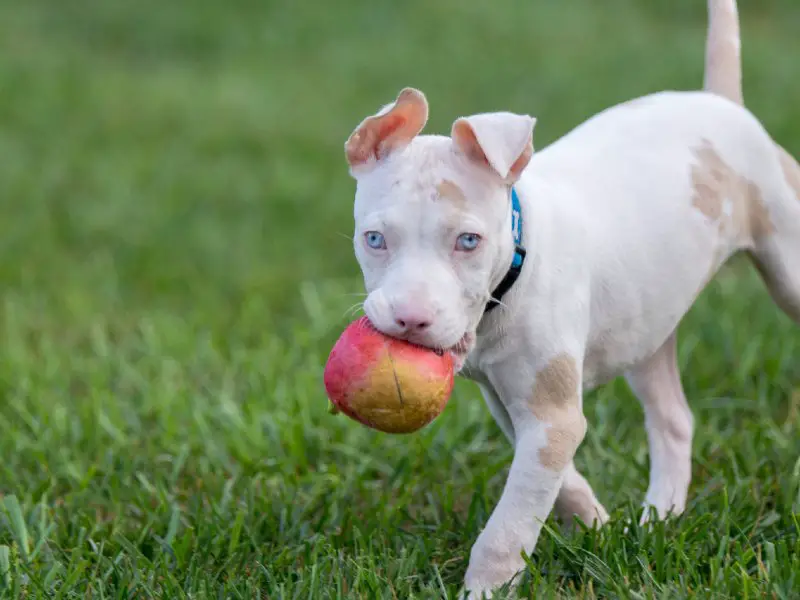
American Pitbull Terriers are among the most intelligent and misunderstood dog breeds available. They come in many different coat colors, so it’s important to note that a white Pitbull is not a separate breed. You can find Pitbull Terriers in all sorts of colors, including fawn, brindle or revers brindle, red or blue-nosed, silver, black, but an all-white Pitbull is a rarer dog.
In this article, we will take a look at all aspects of the White Pitbull. From his appearance to his temperament, to his care and training requirements. We’ll also go over some commonly asked questions, such as whether or not they make good family pets, and take a closer look at some of the genetics behind his beautiful white coat.
Appearance
American Pitbull Terriers with beautiful snow-white coats are very popular. White tends to be a rarer coat color than pure black or brown, and this has everything to do with their genetic background.
White Pitbulls share the same features as other Pitbull colors. They typically have noses and lips that are black or dark brown. Their eyes are generally blue or brown.
White Pitbulls are medium to large-sized dogs measuring between 17 and 21 inches tall. Usually, they weigh between 50 and 65 pounds.
The single-layer coat of a White Pitbull sits very tightly to his body, meaning they have minimal grooming requirements. Their coat is short, dense, and stiff, and if it is a healthy dog, it will be sleek and shiny.
These medium-sized dogs have broad, muscular chests, stocky legs, and a powerful, low tail. Their characteristic wide grin frequently plasters a broad head and short muzzle.
At its largest and heaviest, Pitbulls can reach 21 inches tall and weigh 80 lbs. However, it is more common for them to be smaller than that.
Unfortunately, some people crop their ears, but their ears fold over very slightly at the tips when left in their natural state. Ear cropping for Pitbulls is a needless medical procedure that gives the dogs no benefit and can be very painful for them, so we do not advise doing this.
An important thing to note about white Pitbulls is that some breeders, especially puppy mills, will try to sell you Pitbulls that suffer from albinism or leucism instead of the real deal. Therefore, it’s essential to understand the difference between these two conditions and tell the difference between them and a white Pitbull.
Albinism is a rare genetic disorder that any living thing can have simply by having two parents who carry the mutation. Since it’s a disorder that means melanin (pigmentation) production is extremely limited, a Pitbull who suffers from it will have very low pigmentation levels in their skin, eyes, hair, and blood vessels. As well, Pitbulls with albinism come with additional health risks.
Looking at their features will tell you if you have a white Pitbull or a Pitbull with albinism. A white Pitbull will have pink, brown, or brown/black lips and colored eyes and a black, brown, or bluish snout. An albino Pitbull will have almost no pigmentation in those areas and instead will have pale lips, snout, and colorless or very light blue eyes.
What about Leucistic Pitbulls? Leucism is frequently mistaken for albinism, but they are two different conditions. This is important because a Pitbull with Leucism will not have the same health concerns as one who has albinism.
So how can you tell if a Pitbull is Leucistic? Again, the eyes and other features will let you know. Leucistic Pitbulls will possess pinker characteristics and eyes that are slightly bluer than an albino Pitbull. However, some experts even find it hard to tell, so don’t make this judgment call on your own.
White Pitbull Personality and Temperament
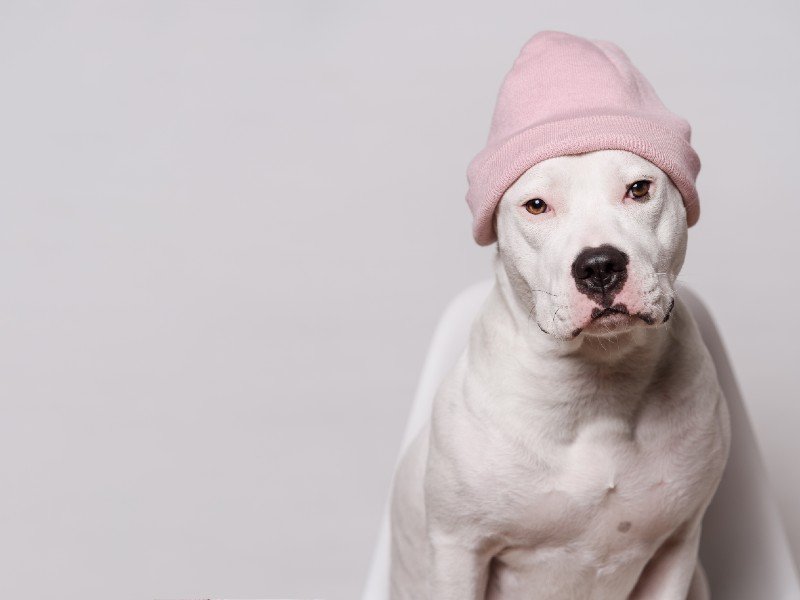
Pitbulls, unfortunately, have a reputation for being vicious and aggressive, but this is not true. As anyone who has spent any time around a well-trained pitbull knows, they are one of the sweetest, family-friendly dog breeds available, provided they have their needs met.
They make for wonderful pets, but they also make for fantastic working dogs and are often used as police dogs, drug/explosives detection dogs, and search and rescue dogs. They are well known for their strength, confidence, and liveliness, and they are not any more dangerous towards people than other dog breeds.
Out of the nearly one-thousand Pitbulls tested by the American Temperament Test Society, almost 90% of American Pitbull Terriers passed the personality test, which is a higher percentage than other dogs more well known for good behavior. Contrary to their public perception, they are so friendly that they often do not make good guard dogs.
Pitbulls are incredibly loyal to their family and want to spend every minute with them. The downside of this is that they can suffer from severe separation anxiety when they have to be without their owners. This can lead to stress and destructive behaviors such as excessive chewing and digging.
If you socialize a Pitbull when he is a puppy, they can be good friends with other dogs. But they are not natural pack dogs, so unless you put some time and effort into this from early on, they will struggle to trust other dogs and can be aggressive towards them. This aggression comes from fear, not from a natural tendency to be vicious.
Pitbulls are extremely lively and possess high endurance levels, and they are also naturally agile. This makes them excellent fence climbers. Ensure you have a strong, high fence in place if this is the breed you’re going to choose to bring home.
Is the White Pitbull a Good Family Dog?
Pitbull’s are one of the most beloved dog breeds, especially in the U.S., and aside from their snow-white coats, white Pitbulls are just like all the other members of this beautiful breed. They are intelligent, strong, beautiful, loyal, loving, and super playful.
As we’ve said before, their bad reputation comes from a few factors. Incorrect breed identification is one potential reason behind this. However, the main reason is that their owners have severely misunderstood this breed’s physical and intellectual needs and have not cared for them properly.
Not knowing how to properly care for this breed results in untrained, unhappy, unsocialized, and uncontrollable dogs. But it’s important to remember that the fault lies with their owner and not the dog. As have pointed out already, the Pitbull is no more vicious than any other breed.
So if you’re willing to put the time and effort into meeting their needs, Pitbulls make wonderful family dogs. Remember, any pet is a lifetime commitment, and having a dog is a lot like having a kid. They will depend on you for everything, and as a reward, they will look upon you as their entire world. Pitbulls especially put their absolute trust in their owners.
As long as your Pitbull is well trained, socialized, and knows his place, they will be great around children. There are, however, a few things to keep in mind.
Pitbulls are muscular and powerful animals even though they are not necessarily large dogs. You’ll have to teach them to be gentle with young children as they can easily knock them over with their boundless energy, and their whip-like tail can pack a punch. But they make up for that with their love and tolerance of all the physical affection that young family members love to provide.
How to Train a White Pitbull
Pitbulls are easy to train, but you will need to be aware of a few things. Their high energy level and strength require a little bit of extra knowledge and diligence on your part. Since Pitbulls have a bad rap, it’s important to train a good ambassador of the breed so you can show the world why they such wonderful dogs.
If you are going to get a pitbull pup, start dog training as soon as possible and make socialization the number one priority.
Ensure your Pitbull pup gets used to a variety of different people and a variety of different situations early on. This means exposing him to lots of different men, women, and children, as well as other animals. You will also want to get them comfortable with being handled. This effort to socialize them will pay off down the road.
Positive reinforcement is a more suitable technique for Pitbulls because of their muscular build. Leash corrections and other punishments tend to be less effective. Instead, use methods such as a clicker or reward-based training. Since they are intelligent and eager learners, they will be looking for ways to please you and get those treats.
Pitbulls are not pack animals and, perhaps because of their training as fighting dogs in the past, they can get aggressive with other canines. You can control this by teaching them to keep their focus on you. The ‘look’ command will come in very handy, as well as ‘stay’ and the emergency recall.
Make sure you are practicing these commands in a variety of different situations and environments. In dog training, this is often called ‘proofing .’ It is an essential technique, especially for Pitbulls.
Many Pitbulls do very well in obedience training and even advanced obedience training. What’s more, they tend to be well suited for dog sports like rally obedience and agility because of their lively exuberance.
These activities can be a great way to check off a lot of your Pitbulls boxes. Not only will it allow you to bond, but you will be able to reinforce their good behavior while giving them the exercise they so desperately need. And you’ll both have some fun along the way.
Remember that a well-trained dog will be taking their cues from you and not the presence of other people or dogs. If you still have issues with your Pitbull showing aggression towards other dogs, maybe working with a trainer would be a good idea. There are many training classes devoted to just this issue.
Pitbulls are fiercely determined dogs, bordering on stubborn. This means it is doubly important that they know who is in charge and that you train them to follow your lead.
Caring for a White Pitbull
Exercise Requirements
White Pitbulls make for great exercise partners. They will need an hour or more of exercise every day, at the very least. So this is undoubtedly a dog for an active individual or family. And since he is so energetic and intelligent, he will crave and welcome lots of different kinds of activities. They never seem to grow tired of playing.
Energy levels and play requirements are important to consider when choosing your breed. A Pitbull’s energy needs mean that lots and lots of exercise is non-negotiable. If you can’t commit to that, then it will spell disaster for both you and your beloved pet in the form of destructive chewing, digging, and problematic behavior.
Your white Pitbull will also need lots of additional stimulation throughout the day. So whether that’s solo play with some toys that they can’t tear apart, interactive games, or training sessions, make sure your pup is getting lots of stimulation.
We’ve already seen what can happen without appropriate levels of stimulation, so ensure that you are committed to his energy needs before deciding that this is the breed for you.
Grooming and Shedding
A gloriously sleek and healthy coat is what you are looking for in a healthy white Pitbull. Their grooming regime is minimal because of their short, tight hair. But like any dog, they still need regular grooming and a high-quality, healthy diet.
If you want that luster in your Pitbulls coat, you will need to brush him regularly with a rubber curry brush. Circular motions will spread the natural oil’s throughout your dog’s coat, as well as stimulate his circulation. Regular brushing will also remove the dead hair and skin flakes that tend to dull their coats.
Frequent bathing is not required for a Pitbull since they have such a short coat. But if you choose to, use natural chemical-free shampoos formulated especially for dogs.
Shedding is year-round because of the Pitbull’s single layer of fur. Although it is consistent, you will not experience anything too drastic, and there will be no ‘coat blow season’ like there is for double-coated dogs. You can expect a minor increase in shedding in both spring and fall.
Increases in shedding could also indicate other health problems in your Pitbull, such as stress, poor nutrition or allergies, reactions to certain shampoos, skin conditions, or mites. Contact your vet if you notice any abnormal shedding occurring.
Feeding and Diet
Because Pitbulls burn so many calories due to their energy levels, they will need to eat high-quality dog food supplemented with things like oats and sweet potatoes for that added nutritional value. Good nutrition will also help them have a nice shiny coat.
It’s crucial that you feed your Pitbull high-protein dog food with meat as the first ingredient and that it contains a low grain content. Pitbulls can be prone to dysplasia of the elbow and hips, which can be made worse by obesity.
You should feed your Pitbull pups softened dry food about three times a day. Continue their puppy feeding schedule even after weaning and until the dog is about twelve months old.
Adult Pitbulls can eat two times per day but make sure they are given half their food allowance at each meal. Watch out for things like diarrhea, gas, and bloat. This may mean your dog is eating the wrong food. Pitbulls tend to swallow their feed without chewing, so choosing a high-protein, low-grain diet will help prevent bloat and gastric torsion. And never let them exercise directly after eating.
Known Health Problems
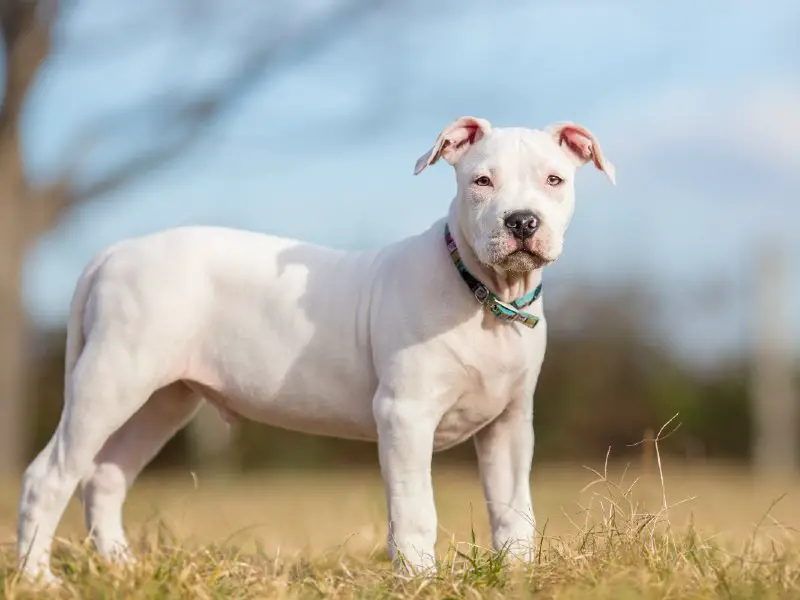
As we mentioned, these high-energy, muscular dogs are generally healthy but tend to have a higher than average susceptibility to hip and elbow dysplasia. They can also develop food allergies and sensitivities as they age. But as is true with any breed, the more attention, exercise, and quality food you give them, the better the chance they will grow up to be healthy Pitbulls.
Buyer’s Guide
| Pros | Cons |
| Extremely affectionate and loyal | Can be nippy as a pup, but proper training will reduce this |
| If properly socialized, friendly to strangers and children | A bad reputation for aggression can make other people wary |
| Minimal grooming requirements | Territorial, determined and stubborn |
| Full of energy and always ready to play | Needs a lot of exercise and activity every day |
| Enthusiastic exercise companions for runners | Consistent training reinforcement into adulthood required |
| Great at agility sports | |
| Easy to train with proper techniques |
Many breeders charge more for white Pitbulls because they inherit their color from birth, and they are often explicitly bred for their white coats. Ensure that you are actually getting a white Pitbull because they can often be mistaken for the Dogo Argentino breed. Also, check your dog’s features to see if it really is a white Pitbull and not suffering from albinism.
Because of their high energy and enthusiasm, if you choose a puppy from a litter, look to see which pup is calmest. If you adopt an older Pitbull, make sure it has come from a loving home to avoid some of their behavior problems. Dogs that have been mistreated or tied up will have difficulty with training and behavior, even in a loving new home.
How Much Do White Pitbull Puppies Cost?
Because White Pitbulls are a rarer color, they will be a bit more expensive. A reputable breeder generally sells them for between $1,000 and $3,000, going upwards of $20,000 depending on the dog’s ancestry. Often female dogs are more expensive than males.
As always, make sure you can meet the Pitbull and, if possible, its parents. And always avoid puppy mills.
Quick Breed Summary
| Breed Characteristics | |
| Size: | 17-19 inches at the shoulder |
| Weight: | 35-85lbs |
| Lifespan: | 12-16 years |
| Coat: | Single-layer, short, dense, smooth |
| Color: | Completely white, with brown, black or bluish snout |
| Do They Shed: | Minimal year-round shedding with spring and fall increases |
| Temperament: | Affectionate, loyal, eager to please but also stubborn and high-energy |
| Intelligence: | Very intelligent |
| Socialization: | Generally does not do well with other dogs |
| Destructive Behavior: | Chewing, digging, aggression, nippy |
| People Skills: | If socialized, is friendly towards strangers |
| Good with Children: | If socialized, is good with children |
| Activity Levels: | Extremely high energy-requiring daily exercise for 60+ minutes |
Summary
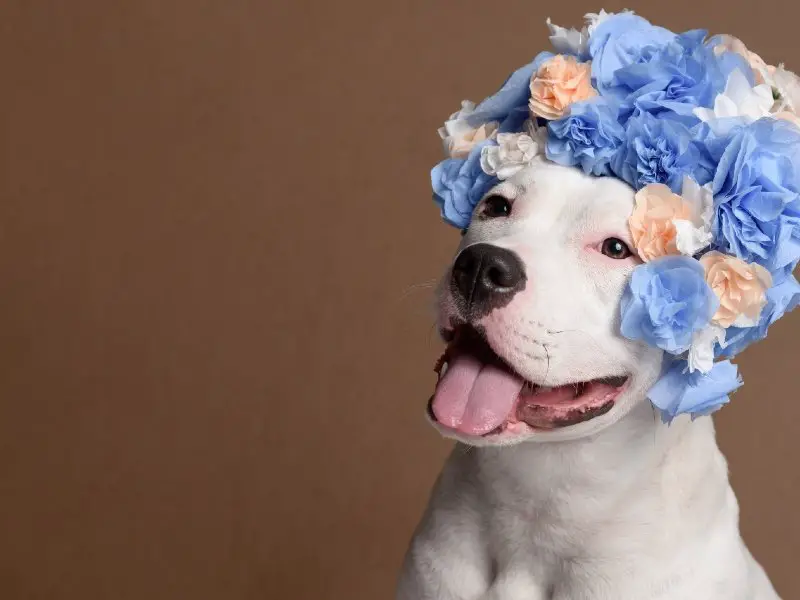
Pitbulls are a wonderful breed if you are looking for an energetic, loyal companion. Just keep in mind their exercise and training needs and make sure you’re available to meet them every day.
Remember, owners who don’t understand or meet their Pitbull’s needs are the source of this breed’s behavior problems and bad reputation. Many people will carry this prejudice. But if you socialize them while they are young, if you give them healthy food and plenty of exercise, if you stimulate them and train them properly, you will have an exemplary dog to call your friend.
What is a White Pitbull?
The American Pitbull Terrier’s history takes us back to 19th century Britain where dog fighting was (unfortunately) a popular sport. The British cross-bred bulldogs, known for their incredible strength and ability to fight, with terriers. These dogs were the original ancestors of the Pitbull.
Although dogfighting was eventually banned in Britain, the Pitbull’s ancestors were brought over to the United States, where good fighting dogs were in high demand.
The original Pitbull Terrier was smaller than the one we are used to today. That’s because after the ancestors of the American Pitbull Terrier came to the U.S., they were bred into even larger dogs, thus creating the breed we now know and love. White Pitbulls have been a color choice from the beginning of this breed’s history.
Pedigree Pitbulls are purebred dogs recognized by the American Dog Breeders Association and the United Kennel Club. They are also part of a larger group of breeds that share many of the same features and personalities. In addition to the Pitbull, this group also includes the American Terrier, the American Staffordshire Terrier, the American Bulldog, and the Staffordshire Bull Terrier.

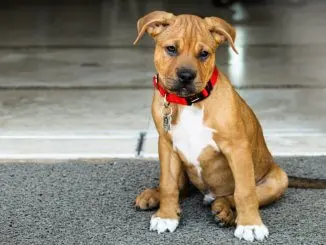

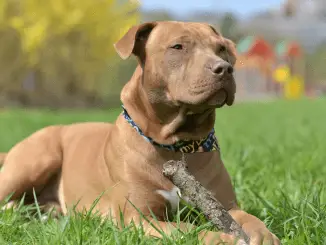
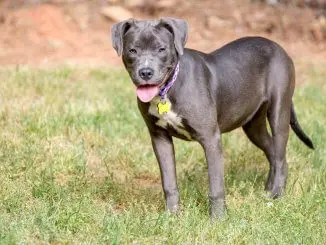
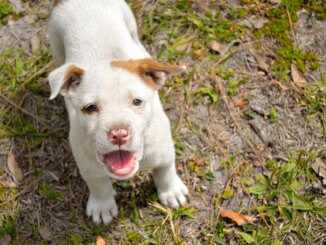
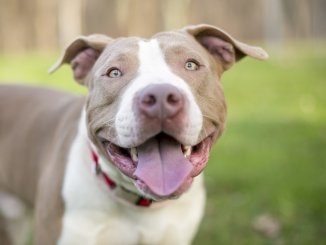
Be the first to comment